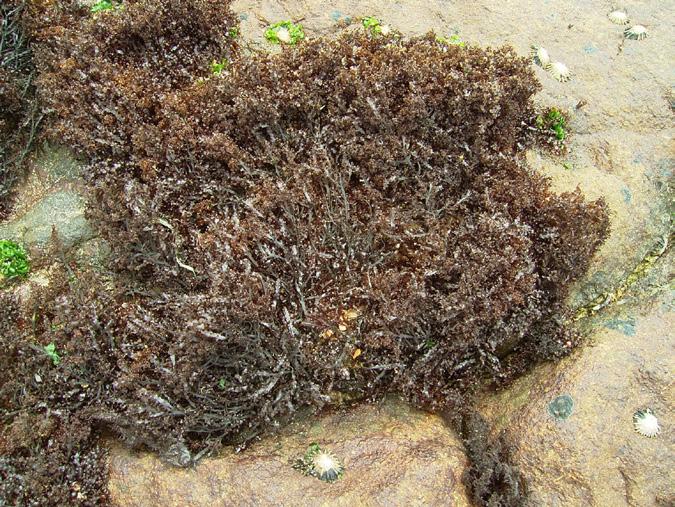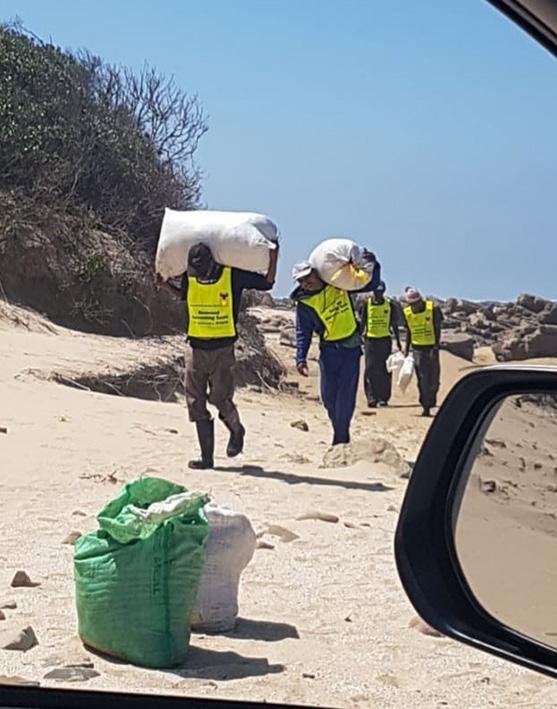
2 minute read
Seaweed Pickers in the Eastern Cape
By Rob Anderson and Mark Rothman
We may worry when we see people moving across the rocky seashore, removing things and putting them in sacks. However, when the people are picking the seaweed Gelidium pristoides, we are looking at one of the most sustainable extractive activities on the South African coast.
Advertisement
Gelidium is one of several red seaweeds that produce agar, a polysaccharide with remarkable properties. It contains a gel that is used in many foods, cosmetics, and other products.
Most important, it is essential in medical pathology, as a neutral medium on which to culture bacteria, fungi, and sometimes viruses: there is no substitute for agar in medical research and pathology.
G. pristoides is our best Gelidium species because it grows in the intertidal zone (so it’s easily collected)
Local species have been harvested here since the early 1950's and in the 1980's public concern led to much research on the effects of harvesting.

Scientists from Sea Fisheries and Rhodes and Port Elizabeth Universities (as they were then) produced reports and more than ten peer-reviewed publications.
The research was summarized at an international Gelidium workshop in Spain, where our Gelidium pristoides emerged as one of the most thoroughly researched commercial Gelidium species worldwide. A typical shore is visited 1-3 times a year and the seaweed picked by hand, leaving the well-attached basal parts to rapidly regrow.

Only about 20% of the overall biomass is removed, and recovery takes 3 months in summer and 4-5 months in winter. Even after intense, experimental harvesting at the same sites for 3 years, there was no difference between harvested and non-harvested (control) sites. Gelidium pristoides is found only in South Africa, from the Cape Peninsula to the northern Transkei.
All intertidal seaweeds contain many tiny animals: crustaceans, baby mussels, nematodes etc.
About 80-90 tons of this seaweed leave SA annually. Gelidium harvesting is completely sustainable at current levels and provides work for some 30-50 pickers, and valuable foreign exchange.

The harvesting, like all “fishing” operations, is controlled by the Marine Living Resources Act, administered by The Department of Forestry, Fisheries and the Environment. The commercial Gelidium right in this part of the Eastern Cape is held by Taurus Chemicals Cape Kelp (Pty) Ltd. A sub-contracting company contracts the pickers, mostly women from poor communities near East London. The same pickers are used rather than locals at different sites because they need regular income and skill and experience. Also, they must be trusted not to poach: if they collect other marine organisms the right-holder and their contractors face severe penalties.
So next time you see a group of workers in yellow tunics picking seaweed give a thought to the humble seaweed that will end up in Japan. And to the amazing properties of agar that give these workers a living, improve many of the products we use and are vital in medical pathology!
The authors
Dr. Robert Anderson (now retired) spent 36 years as a marine scientist at Sea Fisheries and was involved in most of the Gelidium research mentioned.
Dr. Mark Rothman heads the Seaweed Research Unit at the Department of Forestry Fisheries and the Environment. He and Rob were colleagues for more than 15 years.



